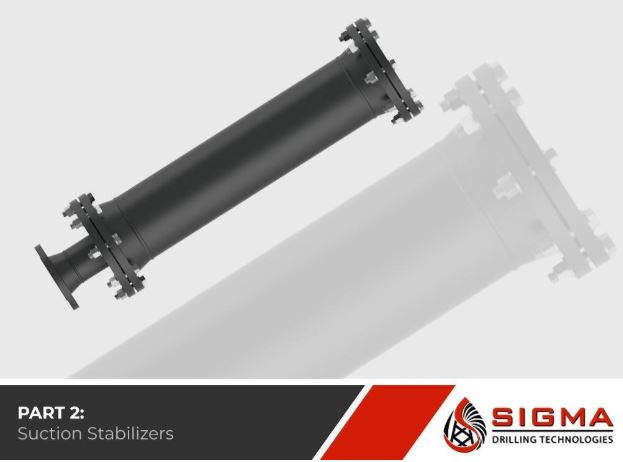Another great way to reduce harmful pulsations and surges, and ensure safer, smoother operation is by using suction stabilizers. As with pulsation dampeners, however, existing suction equipment available today is severely limited. There are only three of them, including:
-
Standpipes. Installing a standpipe off the suction manifold helps create a positive position for the mud pump. By having a gas over fluid column available for the reciprocating pump, it may eliminate pump cavitation. Unfortunately, standpipes don’t have the ability to get fluid into the cylinders to avoid cavitation. There’s also no isolation between the charge pump and the reciprocating one, and there are constraints in the internal system of gas over fluid, resulting in the standpipe losing compressibility and the gas being consumed by drilling fluid.
-
Cartridge Vessels. Addressing pitfalls caused by standpipes, cartridge vessels separate gas and contain it instead of exposing it to drilling fluid. Unfortunately, they require charging with nitrogen gas, which poses a safety risk. When a cartridge fails, the vessel is rendered ineffective because compressibility is lost. This prevents the stabilizer from absorbing any energy, ultimately resulting in cartridge replacement, which consumes time and money.
-
Maintenance Free Units. While a seemingly decent choice because they’re considered safer and require less upkeep, maintenance free units are not without their drawbacks. They use massive tubes of cellularized rubber, which allow pumped drilling fluids to enter the middle of the tube and compress against the inner and outer walls, severely limiting the surface area the drilling fluid can act upon.
So, what should you choose? Getting a Charge Free Stabilizer™ (CFS) is the way to go.
Aside from being designed to improve mud pump efficiency, a CFS also provides additional protection to charge pumps while extending the life of pump expendables. It uses a multi-phase mitigation method that allows for both compression and kinetic exchange, minus any gas charging or unreliable cartridges.
With an interchangeable connection assembly, a CFS can be retrofitted to any current connection and change in the future as rig designs evolve. Additionally, it is 150 PSI pressure-rated and coated inside and out with phosphate for superior resistance against corrosion. CFS works better with the Charge Free Conversion Kit®, allowing for exceptional performance and safer, maintenance-free operations.




